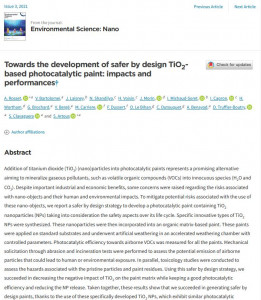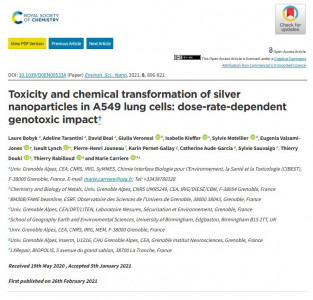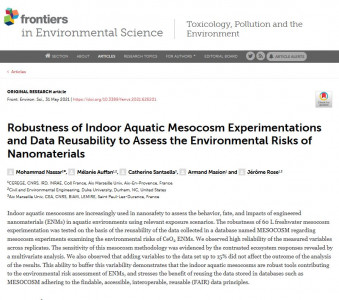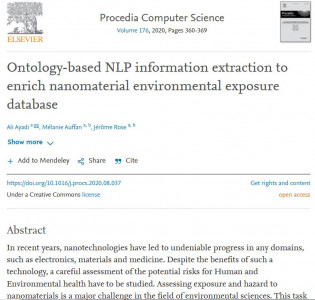La soutenance de thèse d'Adrien Gandolfo aura lieu le mardi 16 octobre 2018 à 14h dans l'amphi Sciences Naturelles du site saint Charles à Marseille.
Incidence de la chimie hétérogène des oxydes d'azote sur la qualité des atmosphères intérieures : impacts des nanoparticules de TiO2dans les peintures.
Jury:
Karine Sartelet (DR au CEREA, Marne la vallée)
Frédéric Thevenet (MCF HDR à l’IMT Lilles Douai, Douai) Armand Masion (DR au CEREGE, Aix en Provence)
Mohamad Sleiman (MCF à l’ICC, Clermont Ferrand)
Laurence Galsomies (Ingénieur à l’ADEME, Paris)
Grégory Brochard (Directeur technique chez ALLIOS, Marseille) Henri Wortham (Pr. à Aix-Marseille Univ, Marseille)
Sasho Gligorovski (MCF HDR à Aix-Marseille Univ, Marseille)
Abstract
In order to improve building energy consumption, new constructions reduce air exchange rate by including better insulation and adding controlled ventilation. However, this energetic advantage participates in increasing the concentration of indoor pollutants and can be the cause of adverse effects on the occupants’ health. A possible solution to this issue is to use the photocatalysis principle/theory as an innovating technique for air remediation. The aim of this study is to optimize photocatalytic materials containing titanium dioxide (TiO2) in order to reduce the concentrations of indoor air pollutants such as nitrogen dioxide (NO2) without the generation of emerging contaminants such as nitrous acid HONO. Over the course of this Ph.D., effects of different photocatalytic paints, tested under simulated and real conditions were studied. Laboratory experiments showed an effective elimination of nitrogen dioxide (NO2) up to 4 times higher with a photocatalytic paint than with a standard paint, the most important parameters influencing NO2 elimination being nanoTiO2 quantity built-in the paint, light intensity, and temperature. This study also highlights the heterogeneous formation of nitrous acid (HONO) during the photocatalysis of NO2, reactivity yields range from 4 % to 20 % of used NO2. During a scale one study in a model room, a significant concentration of HONO was measured. HONO is responsible of up to 20% of the formation of hydroxyl radical in indoor atmosphere, affecting therefore the oxidative capacity of such environments. Other major contributions to the production of OH radicals are peroxide radicals (RO2) retroconversion and alkene ozonolysis. In the presence of photocatalyst in paints, OH radical concentration higher than 1.0·106 radical.cm-3 was measured, which is 50 % higher in average than without photocatalyst. Those observations reveal yet not fully elucidated mechanisms for the indoor formation of this compound.
Keywords: Indoor Air Quality, Photocatalysis, Nitrogen Dioxide, Nitrous Acid, Photochemistry, OH Radical









